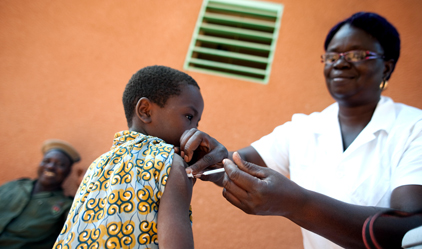Big Research Question: How could a clinical trial be designed to measure the impact of a pneumococcal vaccine on community health in Africa?

The World Health Organisation estimates that 800 000 children die from diseases caused by pneumococcal bacteria. There are over 90 different types of the pneumococcus bacterium so the vaccines being developed must target a combination of the most harmful, and must be effective in different parts of the globe.
In this activity students consider the design of clinical trials to test the effectiveness of pneumococcal vaccines for community protection in The Gambia, and interpret results from the original research trials.
Curriculum key words: Vaccination, immunity, antibody, randomised control trial, sampling, single and double blind trials
Resource type: Lesson activity including presentation slides, student sheets, teacher notes and useful weblinks
Ages: 14 – 18
DOWNLOAD TEACHER GUIDANCE
DOWNLOAD LESSON Activity
How to use this resource
at the start of a topic to …
- engage students in a real life context relating to current research
- to find out what students already know
- consolidate existing understanding
at the end of a topic to…
- assess student understanding by challenging students to apply their learning to a new context
- to provide a contemporary example of how scientists are pushing the boundaries in understanding a subject area further
- add depth and challenge
within a topic to …
- enhance
students’ confidence in the analysis of data by providing the
opportunity to work with data types beyond those obtained in the school
laboratory
- assess
student understanding of specific aspects of working with data (working
scientifically by applying their understanding in a new context)
- as an independent learning activity
- to promote careers in STEM and show the varied work of scientists
Image Credit: Gabe Bienczycki, USAID